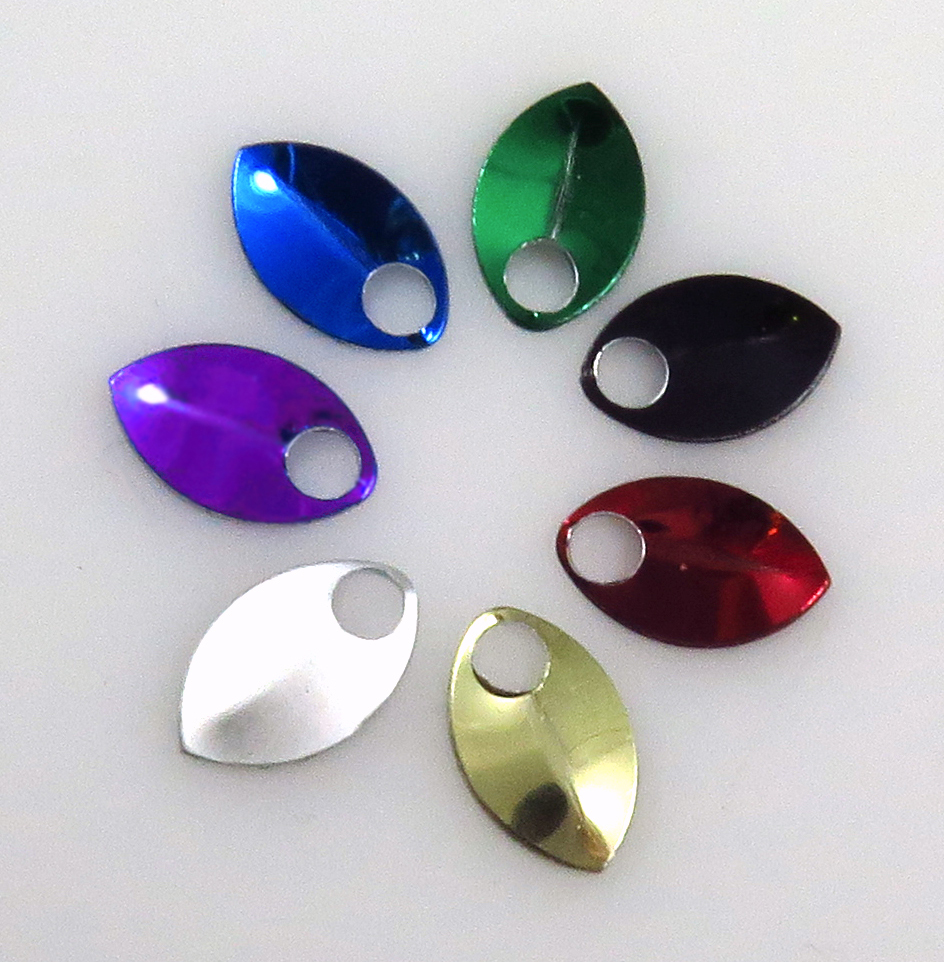Tiny Scale Comparisons (Part 1)
Recently, there have been a couple of new additions to the anodized aluminum Tiny Scale market. All of these tiny scales, original and new, are punched from an anodized sheet of aluminum and therefore have exposed metal edges. There are also some important differences between the original and new tiny scales. Let’s compare:

These are the original tiny scales. They come in 8 different colors, 7 shiny, mirror-finish colors (silver not shown) and Frost (shown), which is a silver color with a satin finish. They measure 12mm x 7.6mm in size with a 3mm hole. The manufacturer recommends using 20g (AWG), 7/64” id jump rings when working with these scales.

These are the two new color options that are now available, neon yellow and pink, both with a shiny mirror finish. These tiny scales also measure 12mm x 7.6mm in size with a 3mm hole.

These tiny scales are available from Fire Mountain Gems (FMG). The FMG tiny scales are smaller than the others, 11mm x 7 mm with a 1.5 mm hole. They come in a wider range of colors (11), all with a soft satin finish (which I prefer). I purchased only the copper color (shown).

All 3 types are different in thickness. I used my calipers to measure them. The scale on the left is from the original group and is 0.39mm thick. The middle scale represents the new pink/yellow scales and is 0.62mm thick. The right scale is one of the FMG scales and is 0.89mm thick.

Another difference to note is the placement of the hole on the scales. The left scale is one of the original scales. You can see that the hole is placed very high on the scale, leaving a thin border of metal around the hole. The center scale is one of the two new colors. You can see that the hole sits lower on the scale leaving a thicker metal border around the hole. The right scale is the FMG scale. The hole is only half the size of the holes in the other 2 scales resulting in a very thick metal border around the hole.

In addition, if you compare both colors of the new tiny scales, you’ll notice that the holes in the yellow scales I received are placed lower than the holes in the pink scales, resulting in a thicker metal border around the hole of the yellow scales.
A tiny variation in your materials can be huge when working at the micro level. Therefore, even minor differences in the thickness of the metal and the placement and size of the holes in these scales will have a major impact on the outcome of your project.
I am going to “test drive” these new tiny scales to see how they perform. I’ll share my findings in my next blog post.

